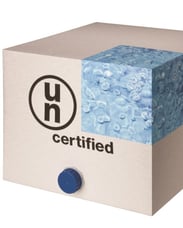What They Care About Matters … All the Way Up the Packaging Supply Chain!
We’re talking about the future a lot lately. We feel it is important for so many reasons: the sustainability of our products, strategies, businesses—and our planet. It’s why sustainability and mindful packaging is such a pivotal focus for us. We’re certainly not alone in this mindset.
We also are very aware how much the everyday consumer markets and fast-moving consumer goods (FMCG) influence overall buying  habits, including industrial packaging. Take a look at our recent post about Amazon’s new packaging program—Frustration-Free Packaging—to see the impact consumer influence has on massive corporate decisions.
habits, including industrial packaging. Take a look at our recent post about Amazon’s new packaging program—Frustration-Free Packaging—to see the impact consumer influence has on massive corporate decisions.
What They Want and Who They Are
It’s important to understand what consumers wants—and who they are! Statistics can give us gross data, but when we drill down into specifics, we gain insight. While Baby Boomers (born between 1946 and 1964), according to a Delloitte study, will continue to be the wealthiest generation in the U.S. until at least 2030, Gen Xers (born between 1961 and 1981) will see the highest increase in the share of national wealth through the forecast period (from >14% to 31% by 2030). Meanwhile, Millennials (born between 1981 and 1996), as a part of a Nielsen study last year, said that they are twice as likely (75% vs. 34%) than Baby Boomers to say they are definitely or probably changing their habits to reduce their impact on the environment. Millennials are also more willing to pay more for products that contain environmentally friendly or sustainable ingredients (90% vs. 61%), organic/natural ingredients (86% vs. 59%), or products that have social responsibility claims (80% vs. 48%).
On-Demand Info
We live in a digital world where answers are a two-second convenience away. How often have you—whether fact-checking while watching a “based-on-a-true-story” TV show, entrenched in an all-out Google war to see who’s right on a silly trivia fact, or for more serious searches for vital intel—gone to Google to verify something? Often, right? It’s how we live. It’s the “microwave mentality”—we want our answers served up, fully cooked, in an instant. It’s what we’ve come to expect. How does that apply to packaging? Keep reading …
The Nielsen findings support the notion that this generational “divide” with regard to sustainability is fueled by technology. According to Sarah Schmansky, Vice President, Fresh/H&W Growth & Strategy, Nielsen, the report indicates that “sustainable shoppers in the U.S. are 67% more likely to be digitally engaged, which means they are used to having the products and knowledge they want right at their fingertips. With their devices playing a significant role in their purchase decisions, a simple and frictionless shopping experience between on and offline is critical.”
How it Plays Out
This plays out in a significant way when we consider that the shoppers who depend most on technology to drive their purchases—Gen Zers and Millennials—are, indeed, researching companies to see if they have a favorable sustainability profile. They are well aware of—or can find out very quickly—the corporate structure of the end-use product to find out which corporate umbrella it lives under. Online purchases, and even brick-and-mortar decisions, can be impulsive and emotionally tied to their personal beliefs about your corporate responsibility quotient.
We haven’t even gotten to Gen Z yet (born between 1997 and 2015)! This stat is telling of what we spoke of above: 47% of Gen Zers use smartphones while shopping in stores. The same Khoros article that supplied that stat tell us that by 2020, Gen Z will command 40% of all consumer shopping. And they already drive $44 billion in buying power. Hear this: 93% of parents say that their Gen Zers influence the household spending. If you think this cross-generational accountability wave will not impact your industrial packaging business at the corporate level, Nielsen has a different takeaway.
Because they summarize it so well, we’re offering this perspective exactly how Nielsen states it in its article.
Companies need to evaluate their product portfolios and then understand the impact of ingredients and the level of scrutiny that consumers apply to the products they purchase. Consumer sentiment is shifting toward “healthy for me and healthy for the world,” and this is influencing sales of FMCG products across multiple categories. Technology will enable consumers to match the right ingredients to their needs or ailments. Companies will need to clearly communicate and have the data to prove how their sustainable factors help consumers.
The Trickle Up and Out Impact
Think of it as the “trickle up and out” affect. This perspective may seem siloed to only FMCG products, ingredients, and packaging … but it is not. It’s a matter of very short time (and is, in fact, already happening) that technology—and the consumers behind it—will have a hand in watchdogging the reputation and impacting the supply chain all the way up the industrial packaging corporate umbrella.
Here’s something else to consider. According to analysis of the U.S. Census Bureau data completed by Pews Research, Millennials have surpassed Gen Xers in the workforce, making them the largest generation in the U.S. labor force. The play between social and environmental responsibility concerns and the digital ease of remaining informed will certainly have a powerful influence on buying decisions in the corporate sector as an increasing number of Millennial (and younger) buyers and decision-makers fill authoritative positions.
How to Plan Ahead
We recently wrote about planning for the future of industrial packaging like a futurist. Knowing trends is fantastic, but having strategies in place now that will prepare you for changes in the marketplace—even allow you to be the driver of those changes—is even better. We’ve been planning for the future of bulk flexible packaging for some time now. It’s why we designed our disruptive packaging: Meta® Pail, bag-in-box, and UN-certified bag-in-box. These options provide the safe, efficient storage and transport of semi-viscous, solid, and some liquid currently shipped in plastic pails. The sustainability profile of these products is impressive and various industries—chemical, cosmetic, pharmaceutical, food & beverage, and medical—benefit from the exceptional quality, function, and performance this flexible packaging provides. New operation and equipment options we provide make it a seamless transition for you.
place now that will prepare you for changes in the marketplace—even allow you to be the driver of those changes—is even better. We’ve been planning for the future of bulk flexible packaging for some time now. It’s why we designed our disruptive packaging: Meta® Pail, bag-in-box, and UN-certified bag-in-box. These options provide the safe, efficient storage and transport of semi-viscous, solid, and some liquid currently shipped in plastic pails. The sustainability profile of these products is impressive and various industries—chemical, cosmetic, pharmaceutical, food & beverage, and medical—benefit from the exceptional quality, function, and performance this flexible packaging provides. New operation and equipment options we provide make it a seamless transition for you.
If you are ready to take a strategic step forward and plan your company’s future success with a new flexible packaging line, we’re happy to help. Contact us now to get the conversation started.

